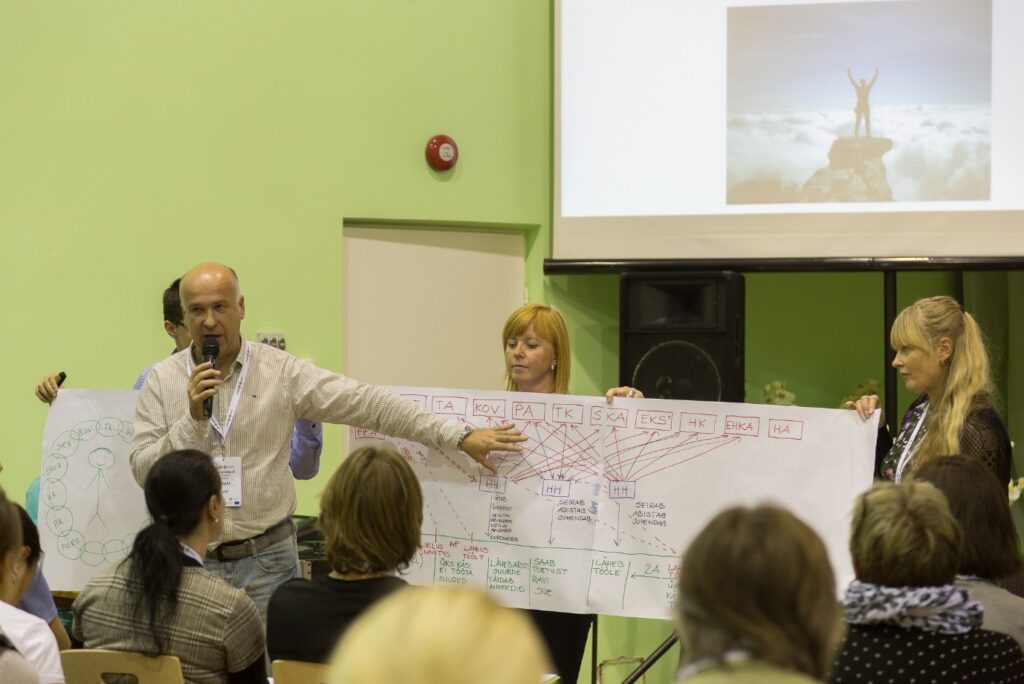Methods and tools used in the Estonian pilot
Methods: hackathon in focus
A major co-design method used in the pilot was a ‘social hackathon’.
Hackathon is not a new method in Estonia. Everybody in the country has heard about this very rapid and intense method of idea development, initially coming from the IT sector.
The pilot introduced and after its successful implementation in Voruuma started to promote the ‘social hackathon’ as a new platform to enable social innovation through co-design of public services, mobilizing community resources including less-empowered groups.
The innovation here was the adaptation of the method to a completely different sector, approaching rural communities and their particular problems, modifying the method to be a “social hackathon”. The social hackathon is an approach combining the innovative spirit of the well-known Estonian startup eco-system with the strong value proposition of the welfare system.
Possibilities: The intention was to mobilize local resources in the community and to use all available resources to reach out to and especially involve vulnerable people. The hackathon platform creates an arena for an equal, collaborative approach to co-design where stakeholders contribute on the same level, whilst the development process is supported by mentors. The hackathon events gave space for multi-sectoral encounters and co-design. Small groups were facilitated to work in teams to propose, explore and ‘pitch’ ideas for new community projects which are sustainable, also financially.
Due to the nature of hackathon events, an idea survives only if after the pitching period, ‘idea holders’ manage to recruit a team around themselves to develop implementation. These teams must include members from different stakeholder groups. During the first two hackathon events about 20 teams were created. Local government representatives started to work together with NGOs and entrepreneurs or with fellow citizens on their ideas. These encounters were very valuable even in cases when most of the participants were from the public sector but some represented service providers, while others came from authorities or ministerial level.
Recruitment (a challenge!): Prior to the first social hackathon event, the pilot team spent nine months with preparations where they visited or invited different stakeholders including services, schools, or organizations of people with disabilities and mental health problems. They also had meetings with service beneficiaries but the approach was not very effective as it attracted only a few people among them to participate in the first hackathon.
For the second hackathon event they learned from this experience and hired mental health peer-support workers as consultants. They participated in the event and gave advise how to design it in a way to engage more service users and people representing vulnerable groups. They also had extended social media activity to attract different stakeholders. All this resulted an overbooking for the second social hackathon event.
Areas of use: The process of co-design is not restricted to traditional social care services. Any entrepreneurial, civic or community group or initiative regardless their profile and topic is encouraged to use social hackathon.

Open data, Social media and Digital technologies
This pilot used an active social media page to engage the target groups and disseminate the idea of co-creation and sharing information about the social hackathon.
To support using open data as facilitators of co-creation of innovative solutions the pilot created a statistical profile of Võru county, where most important statistical characteristics of well-being are visualized. During the process of designing new solutions, hackathon teams have to prove the importance of the problem they solve based on open data.